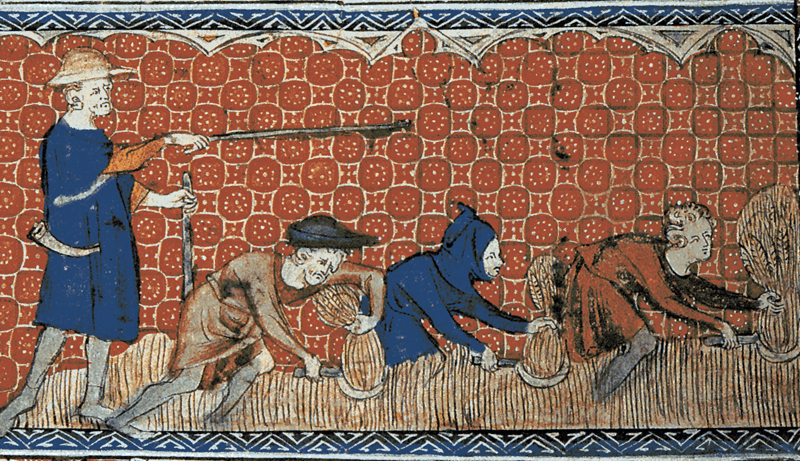
Circa 1310
Public Domain via Wikimedia Commons
August is the eight month on the Gregorian and Julian calendars. One the old Roman calendar this was the sixth month called Sextilis since that calendar start in March. It is named for the Roman emperor Augustus and this month was chosen as many important battles he won were done during this month. It is the last full month of summer in the Northern Hemisphere but in the southern the equivalent of February. In Europe, it is often the month where many workers take vacations.
The adage about August is “Dry August and warmth doth harvest no harm.” August is when the first harvests begin and when the first harvest festivals begin. Typical produce to find in August are cantaloupe, cucumber, corn, eggplant, tomatoes, bell and jalapeno peppers. The first day of August was called Lammas Day by the Celts to mark the annual harvest of wheat and corn. It was typically celebrated with a festival and feast.
The Perseid Meteor shower which began in July continues to August 24. The best viewing days are between August 9-13th. The August full moon is sometimes called Sturgeon Moon but since harvesting begins in the Northern Hemisphere it has also called Grain Moon, Fruit Moon, and Barley Moon. For the people that live in the town of Ny-Ålesund in Norway, August is very important. As the northernmost town in the world, the summer has been one long day. The sun has been staying above the horizon since April and finally during August Polar Day occurs. That often occurs on August 24 though it can vary year to year. Tourists often visit between May-August. The sun does not rise between late October to mid-February.
August is the last full month of summer. Some schools start reopening during the month, which is why parents are often shopping for school items in late July and early August. Many though, if they can, try to use the last month of summer as a time for vacations. It is usually the high tourist season in Europe where many workers get the time off. All the major cities are packed and getting into museums and historical sites can take a while unless you buy a pass (available to tourists) to bypass the line and enter. Also remember if visiting the Vatican, there is a dress code for entering the museum and Sistine Chapel. Generally, men and women must wear clothing that fully covers their shoulders, not wear dresses or shorts that go above the knee, hats & caps must be removed, no tattoos can be visible, no ripped jeans or ripped t-shirts, and if wearing t-shirts make sure it has nothing offensive on it. Women cannot wear any sleeveless or low-cut tops. Full rules can be viewed here. Also be sure to wear comfortable shoes or sandals. The Vatican Museum is large and requires a lot of walking. Flip-flops are not recommended. Also be sure to store your money securely (a money belt is the safest) and watch out for thieves who try to distract you in front while someone quickly opens your backpack or bag to steal.
Sources
Boeckmann, C. (2024, July 24). Month of August 2024: fun facts and holidays! Almanac.com. https://www.almanac.com/content/month-august-holidays-fun-facts
The month of August. (n.d.). https://www.timeanddate.com/calendar/months/august.html
Wikipedia contributors. (2024c, June 28). August. Wikipedia. https://en.wikipedia.org/wiki/August
Travel Tips
Travel Tips | Rick Steves’ Europe. (n.d.). https://www.ricksteves.com/travel-tips
Corrias, A. (2023, November 28). Vatican dress Code – What to wear when visiting Vatican City. Rome Actually. https://www.romeactually.com/vatican-dress-code/
